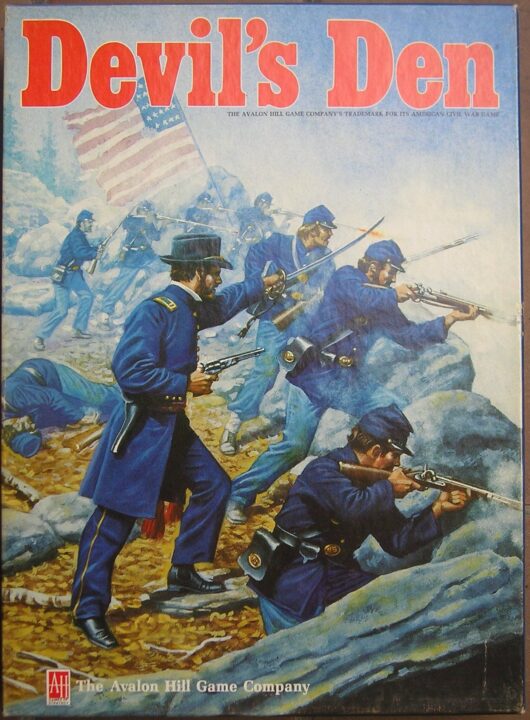Ever had a game night end in dramatic shouts and snacks flying off the table? Welcome to my review of Devil’s Den, the board game that left my friends both scheming and groaning. After a few sessions filled with strategic plans thwarted by random card draws and a board that looks like a goth kid’s lunchbox, I’ve gathered my thoughts. Grab a chair—and maybe a stress ball. Let’s see if this game belongs in your collection or in the actual devil’s den.
How It Plays
Setting up
First, slap the board on the table and hand out roles. One person is the Devil, grinning like they just won a free pizza. The rest are hapless defenders. Sort the tokens and cards by type (try not to drop the Demon tokens under the couch—trust me, they bite). Place starting figures on their marked spaces and shuffle the event cards until at least three hit the floor. Then you’re ready to go!
Gameplay
Players take turns in rounds. The Devil plots evil moves, sending monstrous tokens across the board, while defenders scramble, setting traps and rolling dice to survive the night. Each turn you’ll make choices: attack, hide, or call for backup (which may or may not show up—thanks Steve). Random events pop up, sometimes giving a much-needed boost or, just as likely, ruining your careful plans.
Winning the game
The Devil wins if they corrupt all the key locations or wipe out the defenders—basically, chaos wins. The defenders win by holding out until the event deck runs out or by sending the Devil back to the fiery pit (or just under the table with my missing tokens). Simple on paper, wild on the table!
Want to know more? Read our extensive strategy guide for Devil’s Den.
Is Devil’s Den a Strategic Heaven or a Luck-Driven Hell?
If there’s one thing that really gets under my skin, it’s board games that give players as much strategic choice as a vending machine with just one lonely pack of gum. So, when I cracked open Devil’s Den with my friends last Saturday, I was ready to see if this game brought the brains or just banked on lucky rolls.
Let me be clear, Devil’s Den has a lot going on. Each player takes the reins of a sneaky faction, fighting for control of a spooky, almost cartoonishly evil den. During the first game, I thought I was on my way to the sweet taste of victory with my carefully plotted ambush. Then Tom—who plans about as much as a squirrel in traffic—somehow stumbled into the best move of the night. At first, I was annoyed, but I had to admit, the game gives everyone a shot, no matter their skill level.
Don’t get me wrong, there is strategy to be had. You need to plan where to move, when to attack, and when to run like your pants are on fire. But sometimes, the outcome feels just a bit too random. If you love games where the smartest player always wins, Devil’s Den might leave you feeling a little, well, devilish. For those who like a bit of chaos mixed in with their planning, it’s a blast.
Get ready, because next I’m checking out just how devilishly good (or bad) the bits and board of Devil’s Den turn out!
Component Quality and Board Design: Devil’s Den Gets Crafty
When I first opened Devil’s Den, I expected the usual—flimsy cards, a board that looks like it’s seen too many pizza nights, and those tiny wooden bits you lose under the couch. But hey, Devil’s Den surprised me. Right out of the box, the board screams quality. It’s thick, doesn’t warp, and those blood-red and shadow-black graphics really set the mood—my friend Annie actually said, “Is this board trying to haunt me?” Probably, Annie. Probably.
The game’s pieces feel just right in your hand. The tokens are weighty enough that my cat can’t knock them off the table easily (a true stress-test in my house), and the cards don’t bend just by looking at them. Huge points for that. I’ve played Devil’s Den during a raucous game night where someone managed to knock over a whole glass of cola—absolutely nothing bled or smeared, though our friendship nearly did. I even like the little detail on the player markers—each one is unique, which makes it easier to remember that Steve’s the sneaky demon and I’m, well, also a sneaky demon. But with a hat.
I do have tiny gripes. The box insert doesn’t really keep things tidy, so before each game we spend a few minutes hunting for bits. Also, while the art is moody and cool, it’s a bit dark in low light. I recommend not playing Devil’s Den by candlelight, unless you enjoy squinting or playing Guess Which Token is Yours.
Now, shuffle up your patience, because next I’m tackling how long you’ll be stuck in Devil’s Den and whether you’ll come back for more rounds.
How Long Will You Really Be Stuck in the Devil’s Den?
Alright, buckle up. You want the truth about the length and replayability in Devil’s Den? Here it is, straight from someone who once spent five hours in an actual devil’s den (okay, it was my friend Dave’s basement, but close enough). When we first cracked open the box, I thought we’d squeeze in a quick game before dinner. Three hours later, we were still arguing about who controlled the infernal portal, and my pizza had gone cold. So, yes, Devil’s Den is not for the faint-hearted or the easily bored. Expect your first game to take around two to three hours, possibly more if you have a table full of overthinkers or people named Dave.
Now, let’s talk replayability, because nobody likes a one-night stand with a board game (unless it’s with Monopoly, which was a mistake). Devil’s Den tosses in variable set-ups, hidden victory objectives, and a handful of ways to torture your opponents – I mean, challenge your friends. After four plays, we still found new paths to victory and sneaky tactics to try. That being said, some scenarios can start to feel a tad familiar if you play back to back, so maybe mix it up with another game in between if you’re a serial gamer like me.
Is Devil’s Den an eternal flame or a one-hit wonder? With the right group, it’ll keep burning for a while. Next up: let’s peek behind the curtain and see who’s really running the show, Luck or Skill?
Luck vs Skill: Is Devil’s Den Fair or Frustrating?
Every time I crack open the box for Devil’s Den, my friends look at me with suspicion. “Is this the one where Jamie got lucky and crushed us last week?” they ask. Well, yes and no. Here’s the honest truth about luck and skill in winning Devil’s Den.
At first glance, Devil’s Den tries to sell you on clever tactics. There’s troop movement, bluffing, even some sneaky card plays. I spent my first few games plotting moves like a general—only to have my dreams stomped by a lousy roll of the dice. You see, the game loves to throw in random events at the worst moments. Just when you line up the perfect attack, fate flings a banana peel under your feet. I once lost three battles in a row because my dice decided to go on vacation. My tactical genius meant nothing next to that cursed luck!
That’s not to say skill doesn’t matter. The best players do outmaneuver the rest most of the time. But if you want a game where you’re rewarded for every clever move, Devil’s Den might drive you up the wall. If you enjoy a wild card or two (literally), you’ll laugh off the chaos and try again.
So, do I recommend Devil’s Den? If you like a little madness and don’t mind luck crashing your victory party—jump in! But if you want pure skill and fair outcomes, this one might leave you howling at the moon.
Conclusion
So, Devil’s Den has thrown me into the fire more times than I can count, and that’s not just because I kept drawing those cursed chance cards. The game shines with its eerie design and chunky components, even if the box insert looks like a toddler’s abstract art project. I love having loads of strategic choices, but sometimes Lady Luck takes the wheel, smashes it, and drives us all off a cliff. It’s a solid pick for groups who thrive on chaos and enjoy a different type of challenge every game night. If you crave pure strategy and shudder at the mention of luck, you might want to look elsewhere. Overall, I’d give Devil’s Den a 3 out of 5—fun, memorable, but a bit too wild for my inner tactician. And that’s a wrap on my review. Time to pack up the board, shovel out the ashes, and try to win next time!


